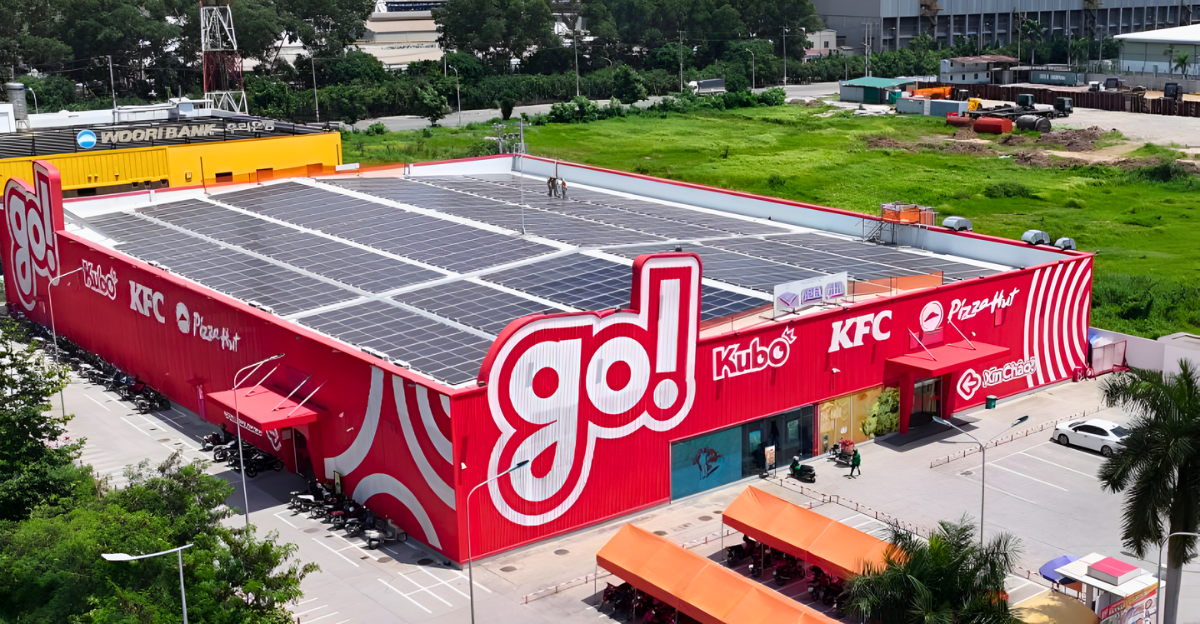
Solar is set to change how we see renewable energy, and giant retailers are already taking advantage of this. Retail giants are beginning to transform their massive rooftops into renewable power plants by installing U.S.-made solar panels on hundreds of stores nationwide.
This once wasted space is now being repurposed to generate clean electricity, cut operating costs, and reduce carbon footprints on a large scale.
Why U.S.-Made Panels Matter

Unlike previous projects, which relied heavily on imports, this initiative emphasizes domestic solar panel manufacturing. By investing in domestically manufactured panels, retailers help strengthen local supply chains, create skilled jobs, and support American innovation in renewable technology.
Using U.S.-made products reduces reliance on overseas imports, making the transition to clean power more resilient against global disruptions. For communities, this means that every rooftop installation gives them sustainable energy.
From Parking Lots to Rooftops
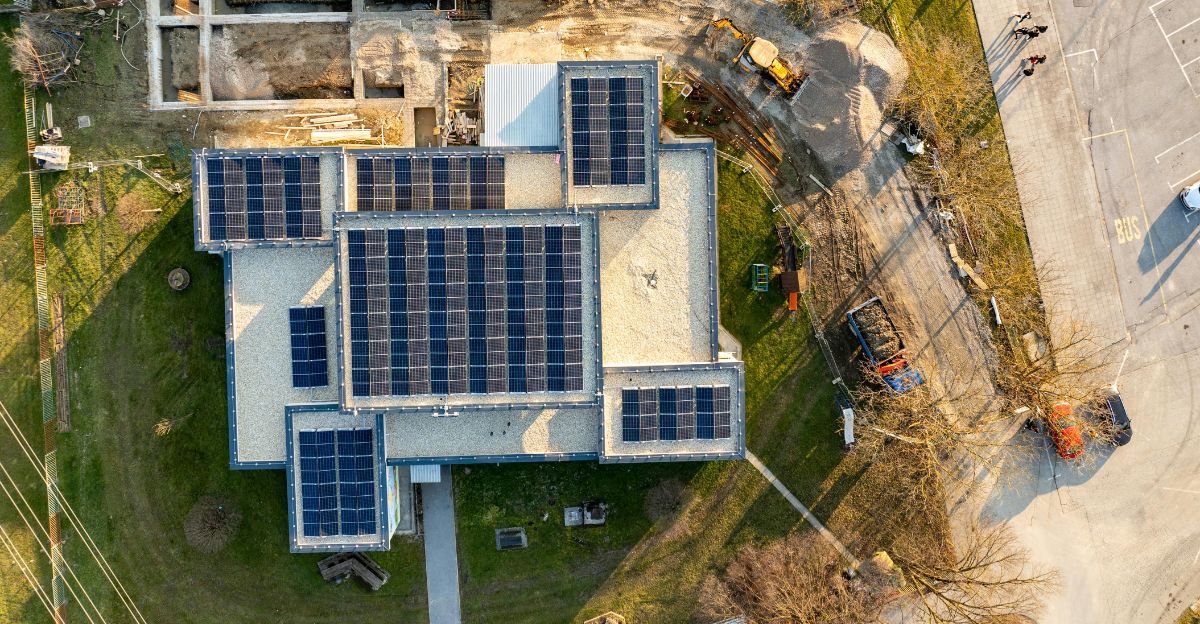
While solar canopies over parking lots have long captured imaginations with their dual promise of shade and clean energy, big-box retailers are starting to think slightly bigger. Rooftop installations cost significantly less than parking canopies, deploy faster without disrupting customer traffic, and require minimal additional infrastructure.
These massive flat roofs, often spanning 180,000 square feet per store, equivalent to three football fields, represent more than 7 billion square feet of potential solar real estate across America’s 100,000+ big-box stores.
Target Leading the Charge
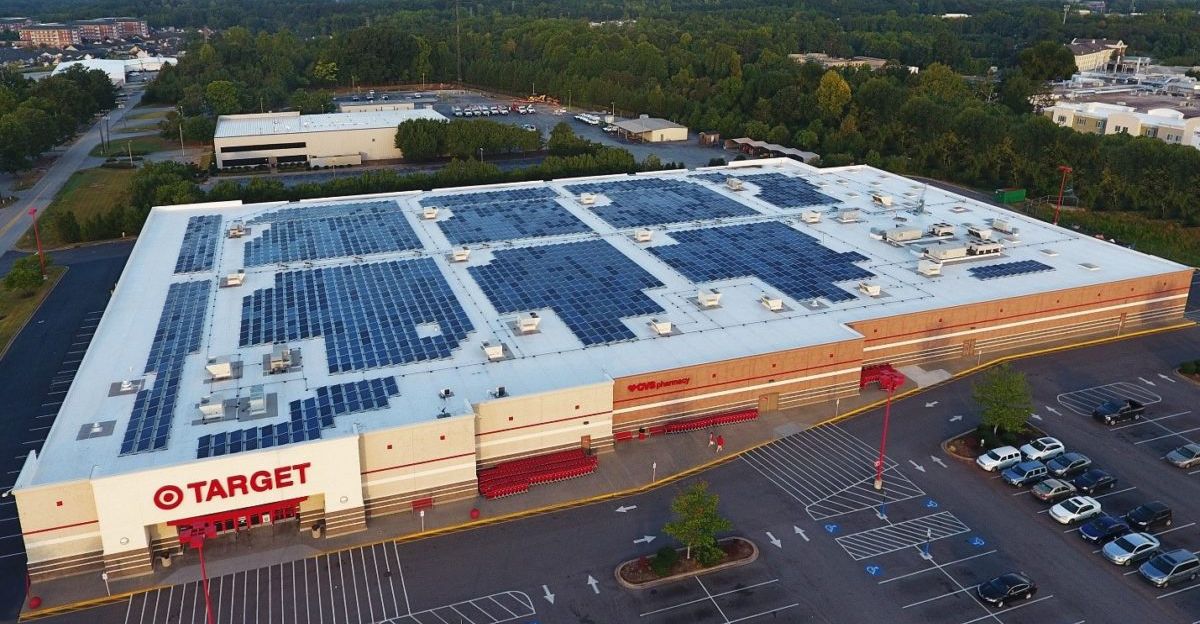
According to the Solar Energy Industries Association’s Solar Means Business report, Target has established itself as the undisputed champion of corporate solar adoption in the United States, claiming the coveted number one position for nine consecutive years. In 2019, Target reached a significant milestone by achieving its ambitious goal of installing 500 rooftop solar systems across stores and distribution centers nationwide.
Target’s Vista, California, store exemplifies this leadership. It features over 3,420 solar panels across its roof and newly installed carport canopies. The store generates up to 10% more energy annually than it consumes, making it the retailer’s first net-zero energy location.
Walmart’s Massive Solar Potential
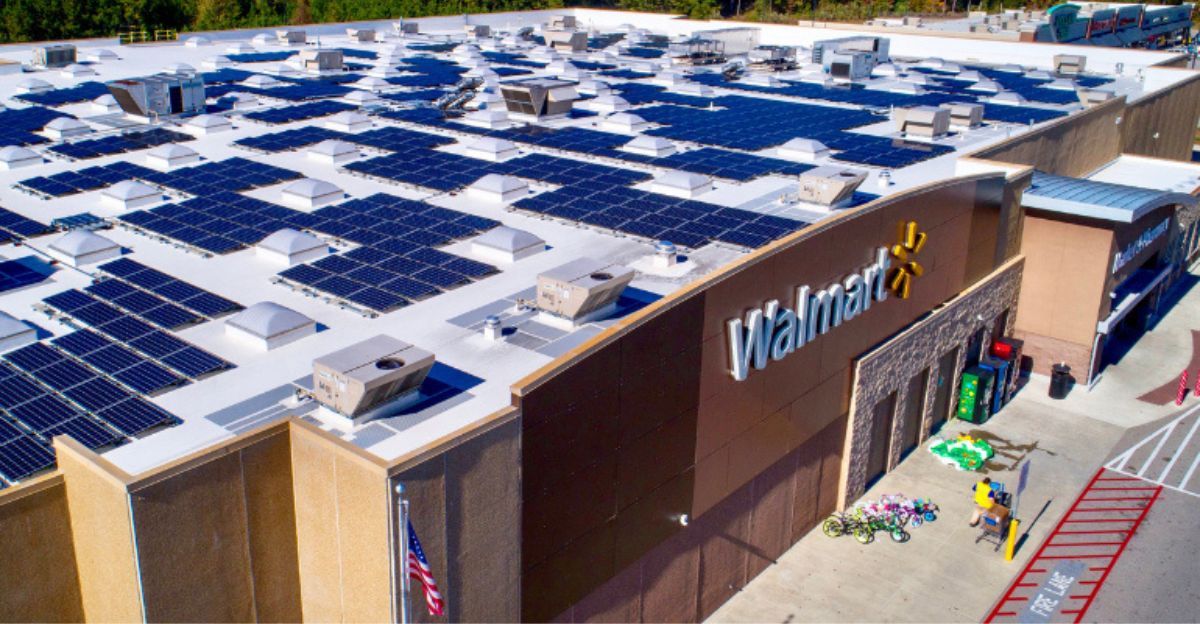
While Target may hold the crown for onsite solar installations, Walmart has the most staggering untapped potential among all American retailers. With around 4,700 stores across the United States and over 783 million square feet of rooftop space, Walmart could theoretically generate more than 39,974 megawatts of solar energy annually if it maximized its rooftop potential and could power over 842,000 homes.
Walmart has been methodically building its renewable energy portfolio, with 48% of its global electricity needs supplied by renewable sources as of 2023. The retailer’s strategy includes adding 1 gigawatt of onsite clean energy capacity by 2030 and enabling up to 10 gigawatts of new projects to power roughly 2 million households annually.
Job Creation and Economic Development
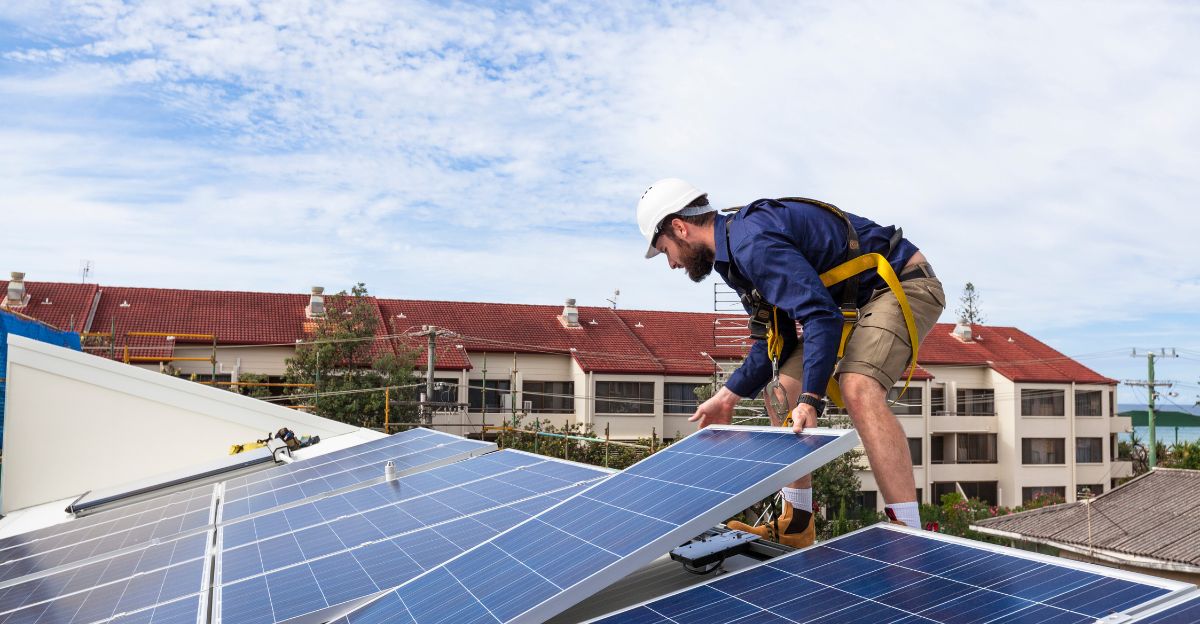
As of 2023, the U.S. solar industry employed 279,447 workers nationwide, representing a robust 5.9% increase from the previous year, when over 15,564 jobs were added. According to the U.S. Bureau of Labor Statistics, jobs in solar installation are projected to surge by 48% from 2023 to 2033, making it one of the fastest-growing professions in the country.
The industry’s domestic manufacturing renaissance has been equally impressive. Solar manufacturing jobs are expected to more than triple over the next decade, growing from about 35,000 today to 120,000 by 2033. The economic impact extends beyond direct employment, with the solar industry generating $33 billion in annual economic activity and supporting entire supply chains of component manufacturers, installation companies, and service providers across all 50 states.
Reducing Carbon Footprint at Scale

If America’s big-box stores maximized their rooftop solar potential, they could reduce greenhouse gas emissions by 52 million metric tons of carbon dioxide annually, equivalent to permanently removing more than 11.3 million cars from the road. The environmental benefits extend beyond operational emissions reductions, as solar panels typically offset all manufacturing and installation emissions within just three years of operation, then continue generating clean electricity for 30-35 years.
Home Depot and Lowe’s Join the Solar Movement

Home Depot has completed 75 rooftop solar projects, with 12 in progress and more than 30 planned for future development. According to Craig D’Arcy, the company’s director of energy management, solar power typically supplies about half of the energy needs for these stores.
Lowe’s has also made substantial commitments to solar energy, announcing plans to install solar panels at 174 stores and distribution centers. This investment in rooftop solar panels builds on Lowe’s recent sustainability progress, including achieving its 2025 goal of reducing scope one and scope two emissions ahead of schedule.
Overcoming Installation Challenges
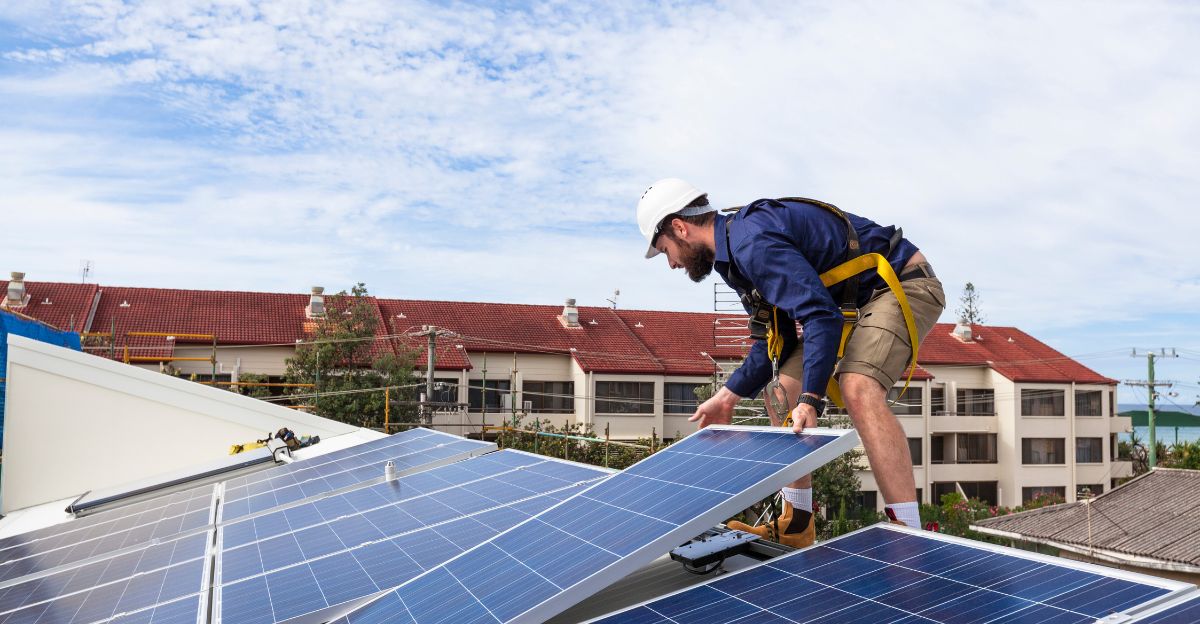
Structural integrity concerns represent perhaps the most fundamental hurdle, as many older commercial buildings were never designed to support the additional weight of solar installations. A standard commercial 96-cell solar panel weighs approximately 40-55 pounds. Combined with mounting systems that add another 22 pounds per panel, the cumulative load can stress aging roof structures beyond their design capacity.
Each installation requires comprehensive structural engineering assessments to evaluate wind loads, snow loads, and seismic forces, with reinforcement costs potentially adding 10-15% to total project expenses when roof modifications are necessary.
The Financial Burden

The upfront capital requirements are staggering: a typical 100 kW commercial solar installation costs approximately $200,000 to $250,000 before incentives, while larger 1 MW systems can exceed $1.15 million. These massive initial investments create immediate cash flow strain, with commercial solar consumers potentially experiencing negative cash flow for the first 5-11 years of system ownership.
Community Solar Benefits from Commercial Installations
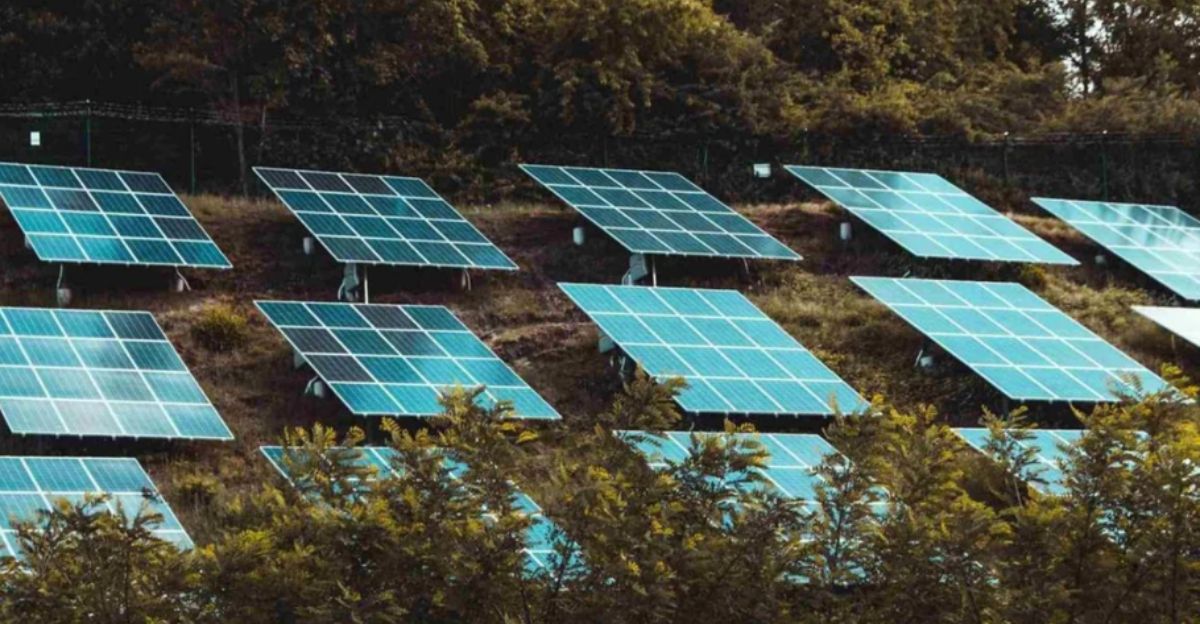
These programs allow residents, small businesses, organizations, and municipalities to receive credit on their electricity bills for power produced from shared solar arrays. There are now 41 states, plus D.C., with at least one community solar project online, with 5.8 gigawatts installed cumulatively through the first half of 2023.
“Community solar allows for equal access to the economic and environmental benefits of solar energy generation regardless of the physical attributes or ownership of an individual’s home or business,” according to SEIA.
The Role of Battery Storage in Commercial Solar
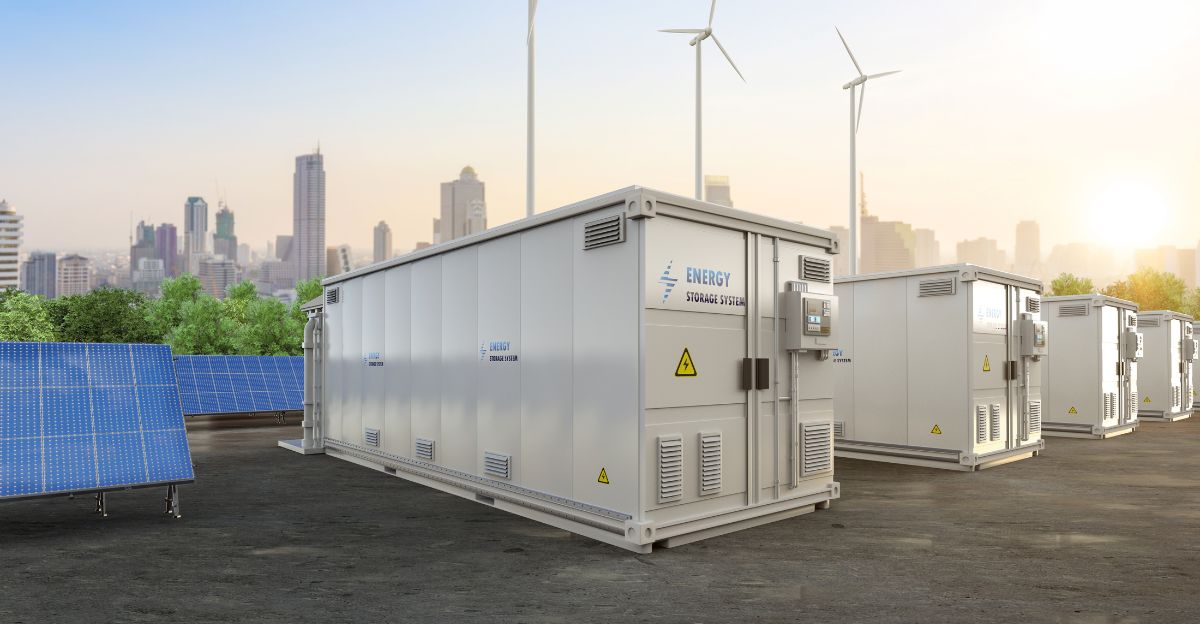
When solar generation and energy storage are integrated, businesses can maximize solar self-consumption by storing excess energy for use when generation is unavailable or insufficient.
“A solar battery storage system ensures that your building can continue operating even when the grid goes down. By storing excess solar energy, businesses can take control of their energy use, improving efficiency, reducing costs, and supporting sustainability efforts,” explains industry analysis.
Technological Advances in Solar Panel Efficiency
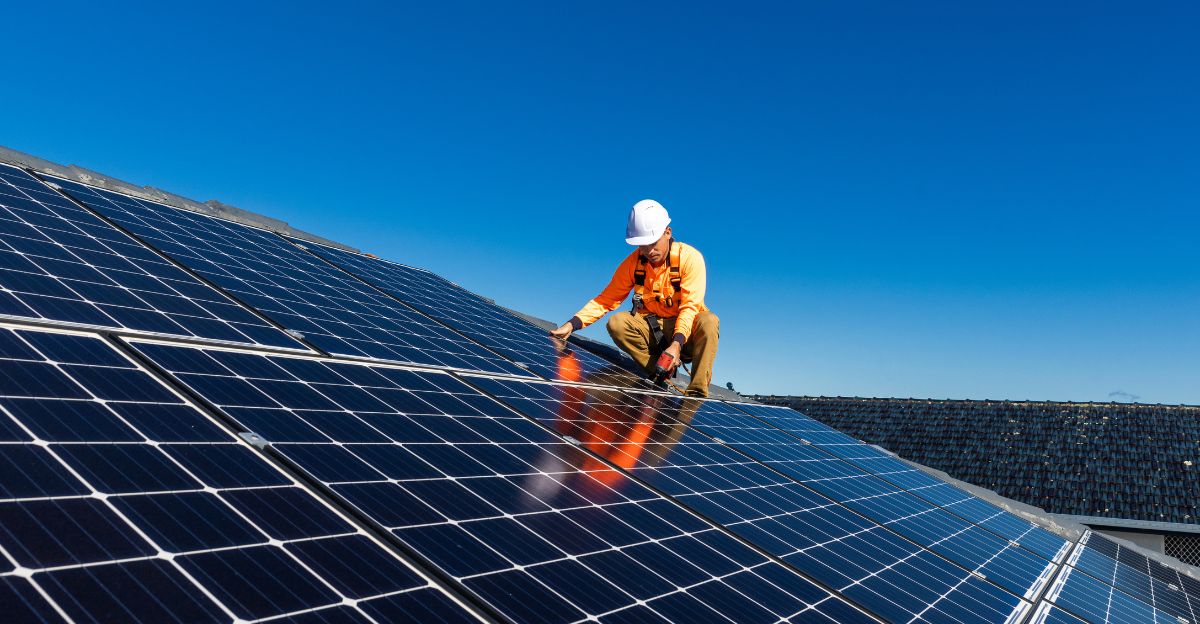
The latest solar panel technology has achieved remarkable efficiency breakthroughs. Modern panels now achieve conversion efficiencies of over 20%, with some reaching 25%. In early 2025, Trina Solar set a new world record for solar conversion efficiency in n-type fully passivated heterojunction (HJT) solar modules, reaching 25.44%. This represents a dramatic improvement from the early days when panels had only around 10% conversion efficiencies.
Financial Incentives and Tax Benefits

The Inflation Reduction Act continues to be a key catalyst for solar market expansion, with the federal investment tax credit (ITC) providing a 30% incentive for eligible solar installations through 2032. This significantly lowers upfront costs for businesses, while several states offer additional renewable energy incentives, further accelerating adoption.
Financial solutions like solar leases and Power Purchase Agreements (PPAs) are more available than ever, helping businesses overcome capital barriers. These financing mechanisms allow companies to adopt solar with little to no upfront investment, paying for the system through energy savings over time.
Supply Chain Challenges
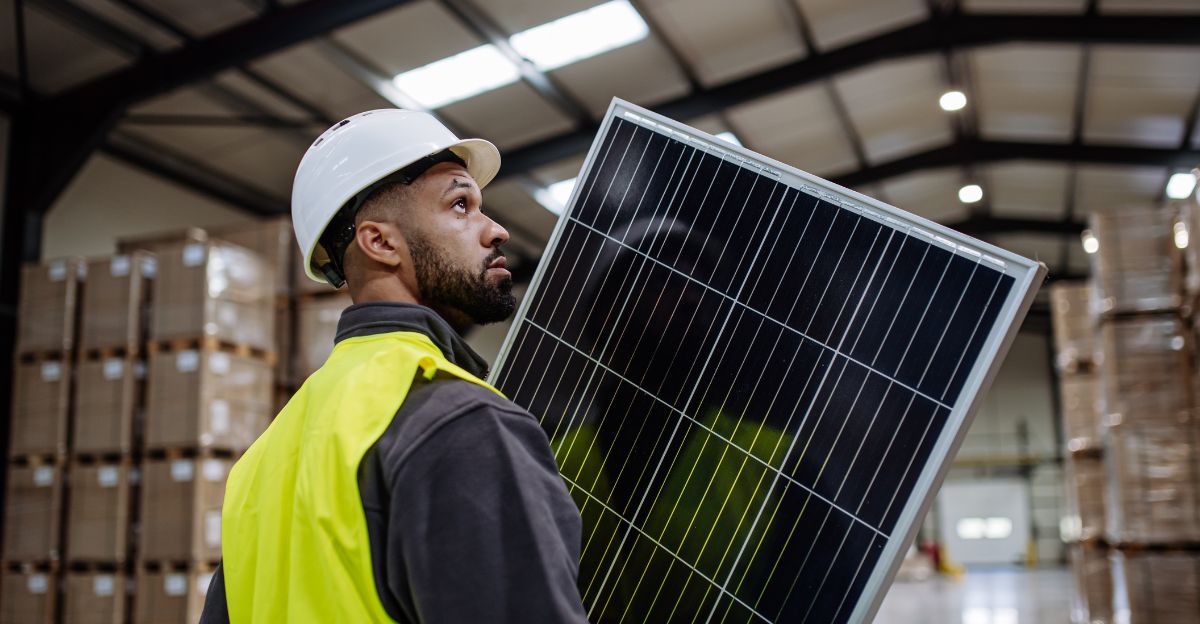
While the solar industry experiences rapid growth, global supply chain disruptions continue to impact the availability of solar panels and energy storage components, occasionally resulting in project delays and increased costs. The dramatic increase in U.S. manufacturing capacity is helping to ease these supply challenges. With over 56 GW of module manufacturing capacity online and dozens of new facilities in development, the domestic supply chain is becoming more resilient.
The Role of Energy Management Systems
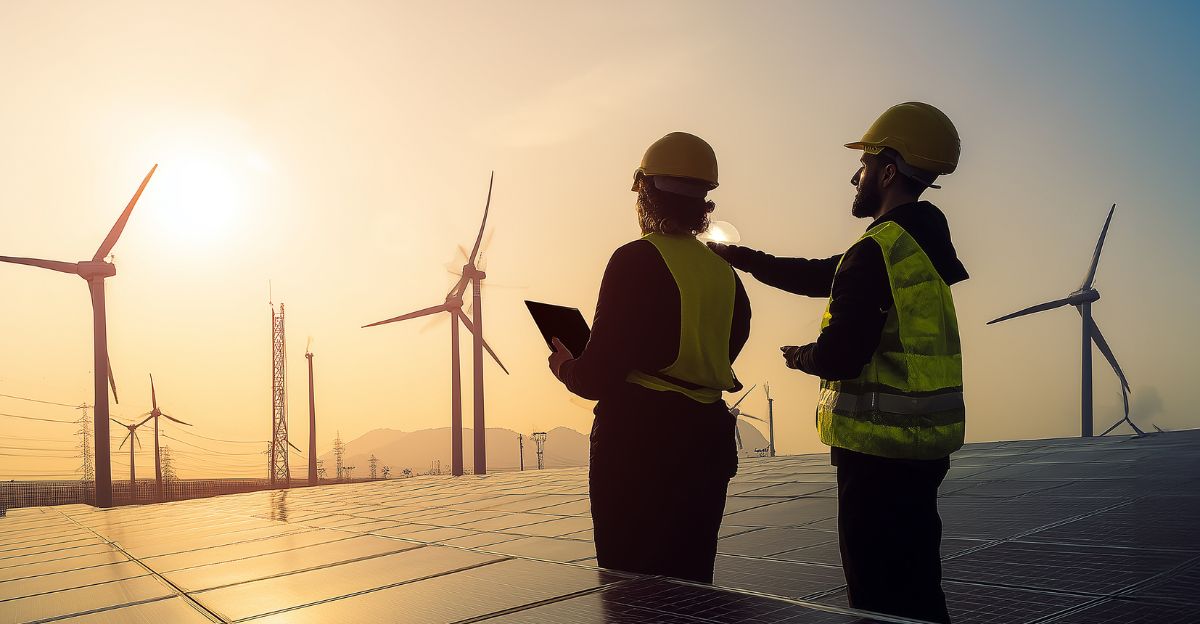
These systems can be programmed to optimize energy use based on various factors, like energy prices, peak demand times, and specific business energy needs. Organizations can maximize their use of clean energy and reduce reliance on the grid by prioritizing self-consumption of excess solar power rather than exporting it to the grid.
These advanced systems monitor everything from panel-level performance to building-wide energy consumption patterns, tracking HVAC, lighting, and refrigeration systems to identify inefficiencies and automatically implement optimization strategies that reduce peak demand charges by 30-70%.
The Impact of Policy Changes on Solar Development

The “One Big Beautiful Bill” Act, signed on July 4, 2025, significantly modified specific energy tax provisions in the Inflation Reduction Act. The Act terminates the Section 45Y PTC and the Section 48E ITC for wind and solar facilities placed in service after December 31, 2027, with exceptions for projects on which construction begins on or before July 4, 2026.
Despite these changes, the cumulative effect of federal, state, and local policies continues to support solar development. State-level initiatives and corporate demand are gaining more relevance in driving solar growth.
Future Projections for Commercial Solar Growth
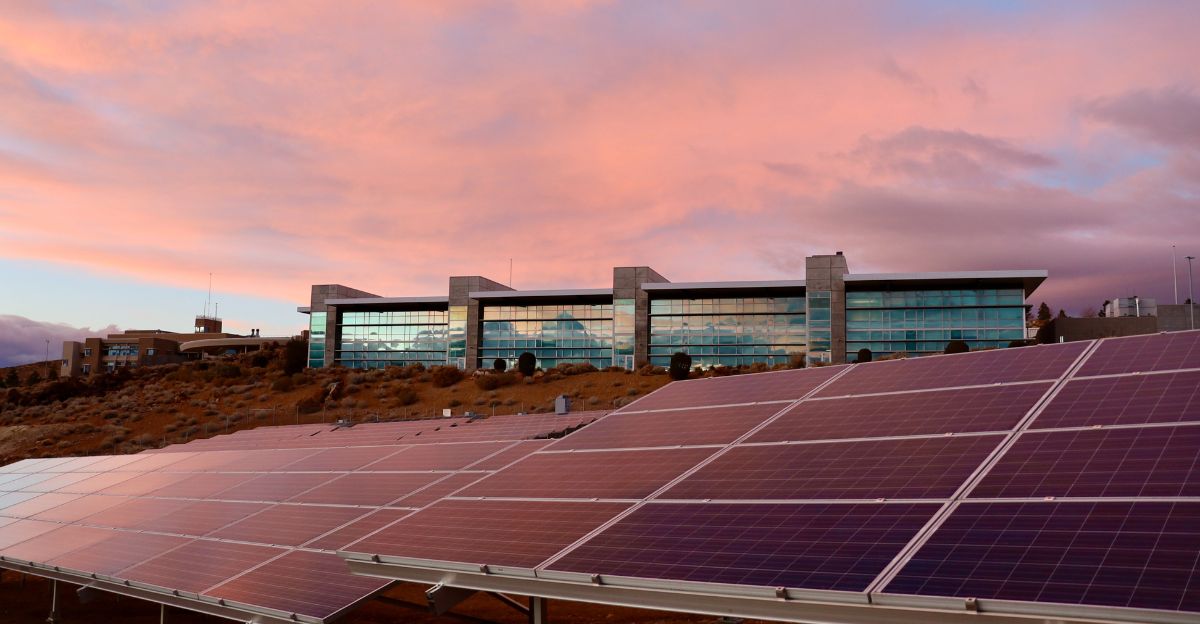
The International Energy Agency (IEA) predicts over 4,000 GW of new solar will be added worldwide by the end of the decade, with solar accounting for 80% of renewables growth over the 6 years. In the United States, SEIA has set an ambitious target for solar energy to reach 30% of the total generation by 2030.
The American solar industry is projected to add an average of 43 GW annually through 2030, with the commercial segment achieving unprecedented growth rates as businesses embrace distributed energy solutions to reduce costs and enhance resilience.
The Global Context of American Solar Leadership

China currently dominates global solar manufacturing, producing about 97% of the world’s silicon wafers. However, the U.S. is rapidly building domestic capacity to reduce import dependence and strengthen energy security.
The rapid adoption of commercial solar energy in the United States is a model for other nations seeking to reduce carbon emissions and achieve energy independence. As American retailers demonstrate the viability and profitability of large-scale solar deployment, similar initiatives are likely to emerge in markets worldwide.
A Bright Future for Commercial Solar
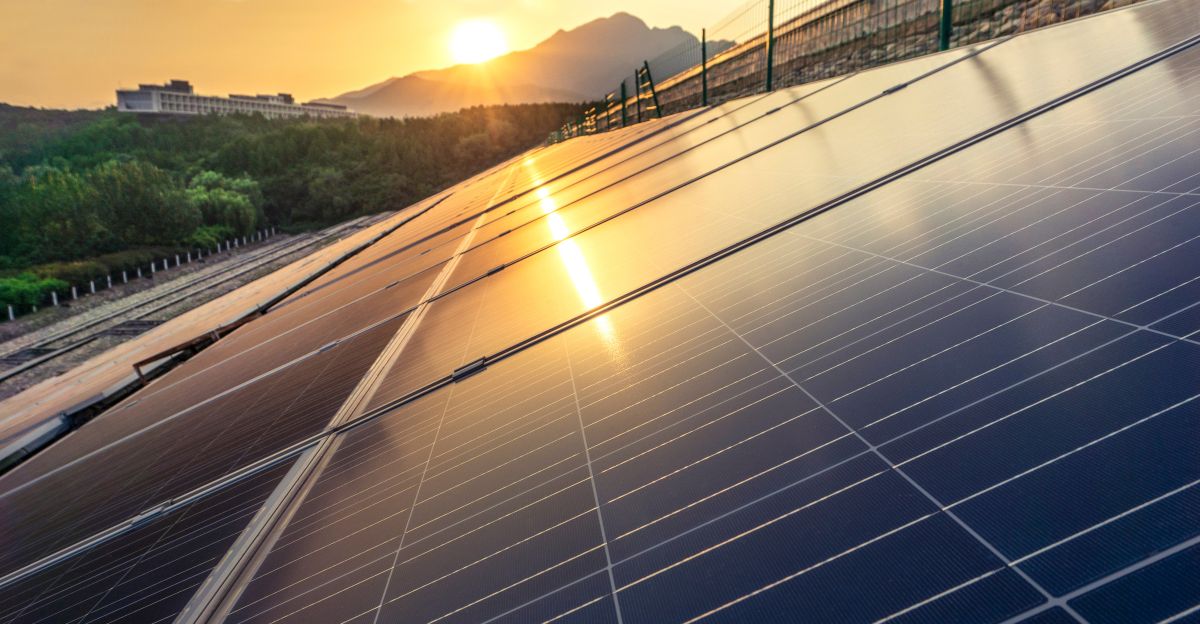
With hundreds of giant store rooftops set for US-made solar panels nationwide, the commercial solar revolution is poised to deliver tremendous economic, environmental, and social benefits. As John Leisen from Target noted, solar energy is “good for communities and the environment,” helping businesses “reduce costs”.